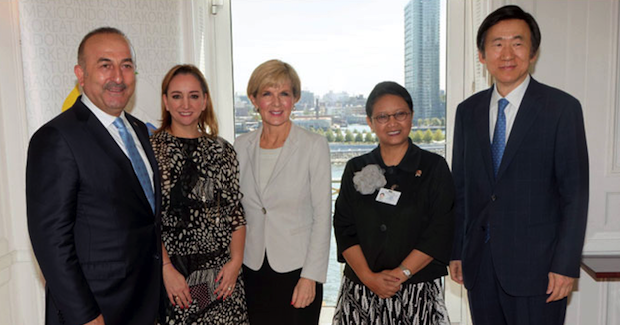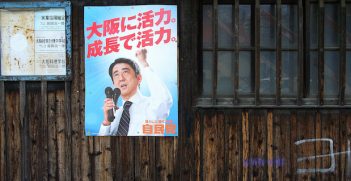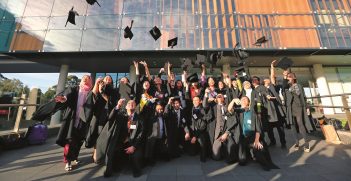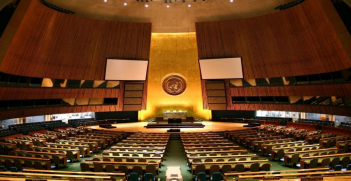MIKTA: An Acronym in Search of Meaning

Australia is hosting the 8th MIKTA Foreign Ministers meeting with Minister for Foreign Affairs Julie Bishop welcoming her counterparts from Mexico, Indonesia, South Korea and Turkey to Sydney.
Much less known than the BRICS, its equivalent for emerging powers, MIKTA has a surprising amount of cohesion. There are genuine commonalities—at the most basic level in economic size—that do not exist for the BRICS. MIKTA countries see themselves as democracies with open economies that are strategically located and strongly linked to their surrounding regions.
MIKTA has been meeting mostly at the sidelines of the G20 and UN General Assembly since 2013. As well as ministers’ meetings, MIKTA has senior officials’ dialogues, consultations among speakers of parliament and an Academics Network. In Australia, MIKTA outreach has included International Women’s Day and community soccer events.
While the MIKTA ministers’ meeting and bilateral meetings are undoubtedly useful, what has given MIKTA a lower profile to this point has been lack of something specific for it to do.
There has been communiqué after communiqué stating a range of areas for potential cooperation—from aid effectiveness, cyberspace and climate change to UN Security Council reform—but there’s nothing as yet which could be seen as MIKTA’s signature initiative.
So what could MIKTA do? I’ve drawn ideas from a MIKTA Academics Network conference held at the Australian National University earlier this year to give some suggestions for harnessing the potential of the MIKTA grouping.
1. Make a common stand
When MIKTA works as an advocacy block it is potentially powerful. Each member state has a quite different constituency: from Latin American neighbours to the Islamic world. While members are wary of being seen as a negotiating bloc, together they are a powerful voice.
So far there have been joint MIKTA statements on the situation in North Korea, the downing of Malaysia Airlines Flight MH17, Ebola and, most recently, on the challenge of humanitarian crises. There is potential for more joint statements, on issues from migration to internet governance.
An example of this is a workshop on electronic commerce held jointly by the five MIKTA Permanent Missions to the World Trade Organization in Geneva in July. In a similar way, MIKTA states could work together to champion an issue such as the World Intellectual Property Organization Development Agenda and build political momentum.
MIKTA states can meet on the margins of international events to see if they can coordinate their positions, as they did at the World Humanitarian Summit in Turkey in May. When a MIKTA member is on the UN Security Council, it can work with MIKTA colleagues.
2. Institute common agencies and networks
If there is a desire to do more, MIKTA could create a common agency or institution. I’m not expecting a BRICS New Development Bank, but perhaps a common agency to promote best practice in overseas aid would be achievable following two MIKTA workshops on development cooperation. Other areas where common agencies could be instituted include a MIKTA Peacekeeping Training Centre drawing on the strong military in each country, or a MIKTA Climate Change Fund to support renewable energy technology transfer.
While there is already a MIKTA Academics Network, there are other areas where cooperation could be encouraged: for example a MIKTA Business Network like the G20’s B20 or a MIKTA defence diplomacy program encouraging exchanges and joint training. Initiatives like South Korea’s exchanges for MIKTA journalists and young professionals and Turkey’s MIKTA diplomatic training program could be extended.
At the most ambitious, a MIKTA visa, like the successful APEC visa, could make it easier for MIKTA scientists and businesspeople to work more with each other.
3. Knock sense into others
MIKTA could offer its good offices to assist with conflict resolution. One of the avowed aims of the group is to play a bridging role and many of the MIKTA countries see themselves as bridge-builders. MIKTA could offer a dispute resolution and mediation service—whether through eminent persons (like the Asian Peace and Reconciliation Council) or something more like Australia’s Civilian Corps.
If this is a step too far, MIKTA might produce a Good Global Citizen Index which measures issues like freedom, democracy and trustworthiness. (This seemed more possible even quite recently before Turkey’s slide). Another option would be a MIKTA award for a young leader in civil society.
4. Transmit information and share lessons
While it’s hard to imagine a ‘MIKTA Five Eyes’—like the ‘Five Eyes’ intelligence-sharing agreement Australia has with the US, UK, Canada and New Zealand—information sharing in other areas might be possible. One of the successes of the BRICS grouping is the way that they look to each other for advice at all levels, from provincial hospital administrators up.
MIKTA countries can also share lessons learned with others. They are among the world’s most successful, having achieved relatively high incomes and quality of governance compared to their regions (admittedly a low bar in some cases). They have lessons to share with other countries trying to emulate their paths to development; for example, the MIKTA countries are able to deliver health care for their societies at a level far cheaper than the US and EU. In the diplomatic sphere, they could develop a MIKTA Diplomatic Training Handbook to share with small nations that lack their resources, acting as the hub of a network that goes beyond the five.
5. Act together to build global governance
Finally, MIKTA countries have a stake in good global governance, particularly at a time when global governance is in bad shape and many organisations ineffective, reducing the status and significance of middle powers. MIKTA raises the profile of its members and helps them set the agenda and play a constructive role on the global stage.
MIKTA could argue for dismantling dead and dying international institutions, improving the operations of existing organisations and opening up international institutions to transparency. MIKTA could agree principles of good global governance and work together to achieve these. While UN Security Council Reform is genuinely hard, there are other areas that are more achievable: for example, MIKTA could develop a common proposal for World Health Organization reform.
As they meet in Sydney, MIKTA countries will remind us that they are like-minded on many of the global challenges of our time. They clearly wish to be active contributors: “we have both the will and the capability to contribute to protecting public goods and strengthening global governance.” The question is what they will use their will and capability to achieve.
Melissa Conley Tyler is national executive director of the Australian Institute of International Affairs.
This article is published under a Creative Commons Licence and may be republished with attribution.





